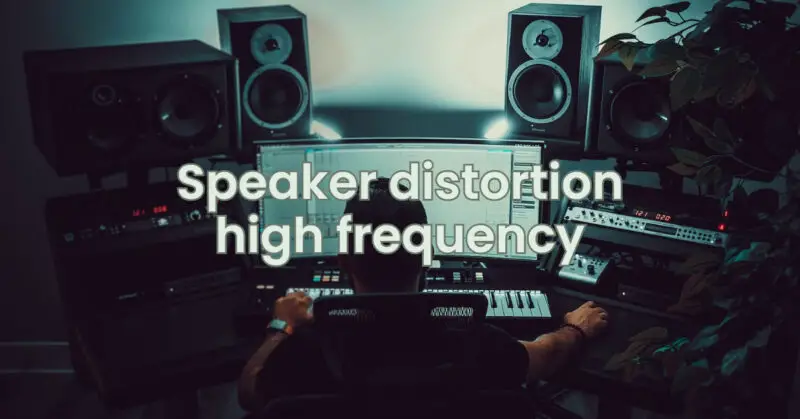The ethereal shimmer of cymbals, the delicate tinkle of chimes, and the clarity of vocals – high-frequency sounds add a touch of brilliance to our audio experiences. But what happens when these delicate tones turn into a harsh, grating cacophony? The culprit is high-frequency speaker distortion. In this article, we’ll embark on a journey through the world of audio and technology to uncover the mysteries of why speaker distortion occurs at high frequencies. By exploring the science behind it, identifying potential causes, and offering solutions, we’ll guide you in restoring the purity of high-frequency sounds in your audio repertoire.
The Symphony of Sound and Technology
To grasp the intricacies of high-frequency speaker distortion, we must delve into the harmonious interaction between sound waves and the technology that reproduces them. Speakers are tasked with transforming electrical signals into audible sound waves, faithfully conveying the nuances of various frequencies. High-frequency sounds, often associated with shimmer and brilliance, are particularly sensitive to any disruptions in this process.
The Science of Distortion
High-frequency speaker distortion is the result of deviations from the original input signal due to the limitations of speaker components and the physics of sound propagation. At high frequencies, the rapid oscillations of the speaker diaphragm can exceed its ability to respond accurately, leading to distortion. This distortion can manifest as harshness, sibilance, or an unnatural tonal quality.
Potential Causes of High-Frequency Speaker Distortion
- Speaker Design: Low-quality speaker components or designs not optimized for high-frequency reproduction can contribute to distortion.
- Amplifier Clipping: Amplifiers that clip or overload when trying to reproduce high-frequency signals can introduce distortion.
- Crossover Issues: Improperly set or poorly designed crossovers can result in distortion by sending incorrect frequencies to the speakers.
- Resonances and Vibrations: Resonances within the speaker housing or vibrations in the diaphragm at high frequencies can lead to distortion.
Solutions for Clarity
- Quality Components: Invest in high-quality speakers and tweeters designed for accurate high-frequency reproduction.
- Amplification: Use amplifiers that can handle high-frequency signals without clipping or distortion.
- Crossover Tuning: Properly tune crossovers to ensure that high-frequency signals are directed to appropriate speakers.
- Damping and Isolation: Use damping materials and isolation techniques to minimize resonances and vibrations in the speaker housing.
- Room Acoustics: Consider room treatments to manage reflections and resonances that can exacerbate distortion.
Conclusion
The perplexing phenomenon of high-frequency speaker distortion is a result of the delicate balance between sound waves and the technology that shapes them. By understanding the science, identifying potential culprits, and embracing solutions such as quality components, proper amplification, and crossover tuning, you can restore the pristine clarity of high-frequency sounds in your audio landscape. Whether you’re an audiophile seeking sonic perfection or an individual with an appreciation for brilliance in music and audio, the knowledge gained here empowers you to unlock the true potential of high-frequency tones and immerse yourself in a world of harmonious sound.


